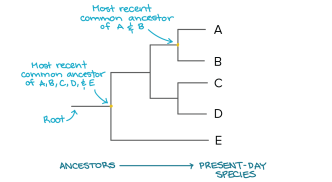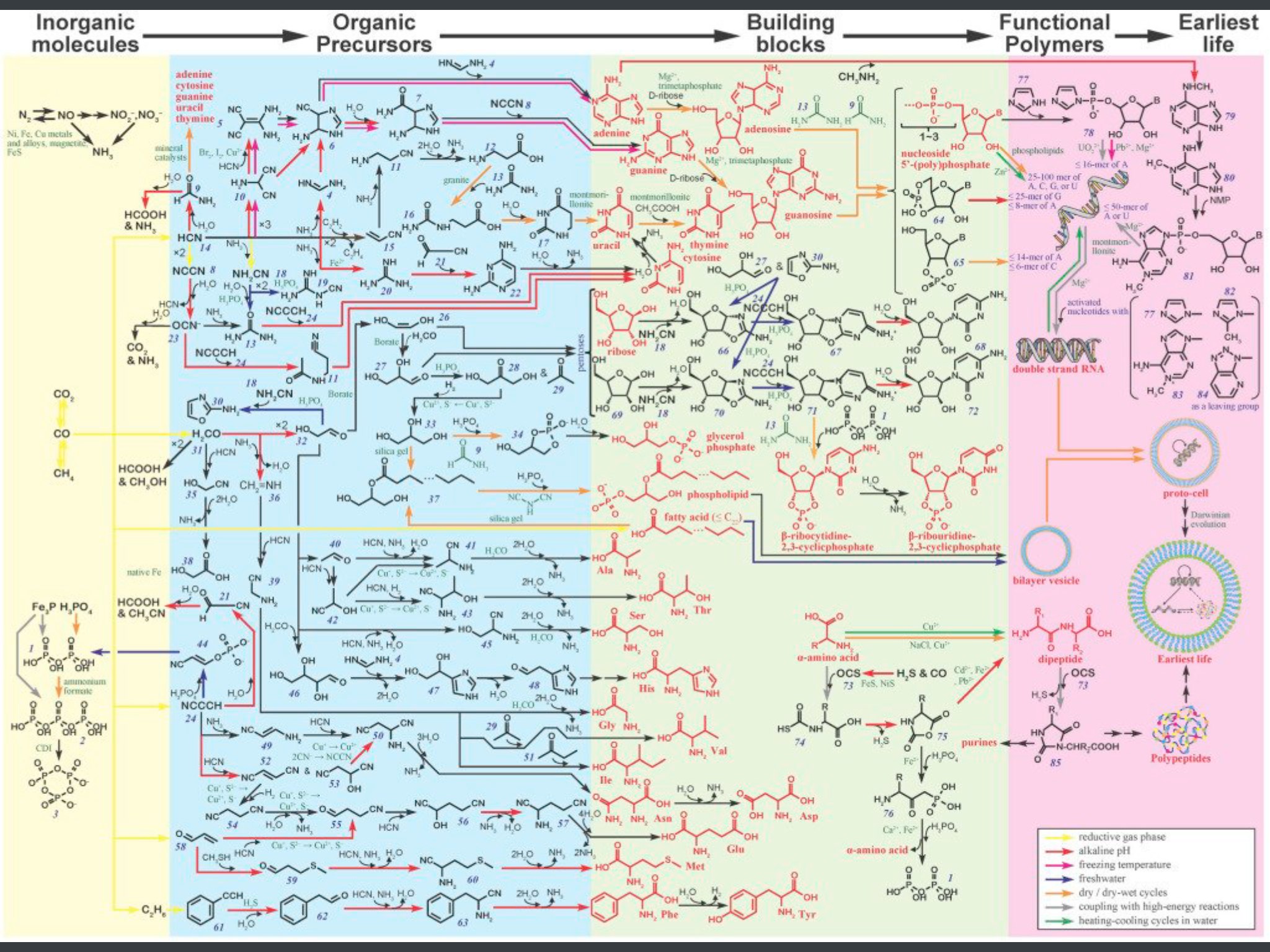We: Difference between revisions
mNo edit summary |
mNo edit summary Tags: Reverted Visual edit |
||
| Line 1: | Line 1: | ||
[[File:Phylogenetic.png|332x332px|'''Figure 1'''. The traditional stepped view of the ''tree of life''.|alt=Phylogenetic Tree|thumb]]'''''You might be surprised to learn how closely we are | [[File:Phylogenetic.png|332x332px|'''Figure 1'''. The traditional stepped view of the ''tree of life''.|alt=Phylogenetic Tree|thumb]]'''''You might be surprised to learn how closely we are related.''''' | ||
Historically, the development of life has always been portrayed in distinct, stepped stages. Life starts at the ''Root ('''Figure 1''')'' and through time, evolution irons out the kinks, ultimately making us (A, B, C, D and E), the most complex forms of life on the planet. But this leaves an important question, ''where did the '''Root''' come from?'' | Historically, the development of life has always been portrayed in distinct, stepped stages. Life starts at the ''Root ('''Figure 1''')'' and through time, evolution irons out the kinks, ultimately making us (A, B, C, D and E), the most complex forms of life on the planet. But this leaves an important question, ''where did the '''Root''' come from?'' | ||
Revision as of 12:14, 18 October 2022
You might be surprised to learn how closely we are related.
Historically, the development of life has always been portrayed in distinct, stepped stages. Life starts at the Root (Figure 1) and through time, evolution irons out the kinks, ultimately making us (A, B, C, D and E), the most complex forms of life on the planet. But this leaves an important question, where did the Root come from?
Life is thought to have started from simple inorganic molecules (See big image below) [1][2] and evolved into increasing complexity. Initially, smaller particles simply bumped into each other to make larger more complex molecules. As more complex molecule developed at some point they gained the ability to replicate themselves these are called the first replicants.
These self-replicating units were the first entity on earth which could replicate itself using a type of source code called DNA. However, even though the replication mechanisms were near perfect, every billion replications an error occurred, which in turn, made a new form of replicant. This process then repeated a zillion times over billion years until...us.
This process is called abiogenesis. Whilst the traditional stepped classification (see Figure 1) is useful to scientists, as it makes digestible chunks to interpret, in the real world the process is much more fluid[3] more like the roots of a tree branching out (see Figure 2). The key takeaway is that although many branches are produced it is still the same superorganism, as shown below.
We are all more closely related than you think, as all life, in short, is DNA travelling through time!
Further reading
- The Selfish Gene - Dawkins, Richard, 1941. Oxford ; New York :Oxford University Press, 1989. ISBN: 978-0198788607
References
- ↑ Evidence for early life in Earth's oldest hydrothermal vent precipitates. Dodd, Matthew S.; Papineau, Dominic; Grenne, Tor; Slack, John F.; Rittner, Martin; Pirajno, Franco; O'Neil, Jonathan; Little, Crispin T.S. (1 March 2017). . Nature. 543 (7643): 60–64. Bibcode:2017Natur.543...60D. doi:10.1038/nature21377. PMID 28252057. Archived from the original on 8 September 2017. Retrieved 2 March 2017 via https://www.nature.com/articles/nature21377?source=post_page---------------------------.
- ↑ Crucial steps to life: From chemical reactions to code using agents. BioSystems. 140: 49–57. Witzany, Guenther (2016). doi:10.1016/j.biosystems.2015.12.007. PMID 26723230. Accessed via: https://www.sciencedirect.com/science/article/abs/pii/S0303264715002063
- ↑ Taxonomic boundary paradox as described by: Taxonomy versus evolution: János Podani Department of Plant Taxonomy and Ecology, Biological Institute, Eötvös University, Pázmány P. s. 1/c, 1117 Budapest, Hungary. TA XON 58 (4) • Published November 2009: 1049–1053. Accessed on 3 July 2022 via: https://onlinelibrary.wiley.com/doi/epdf/10.1002/tax.584001


